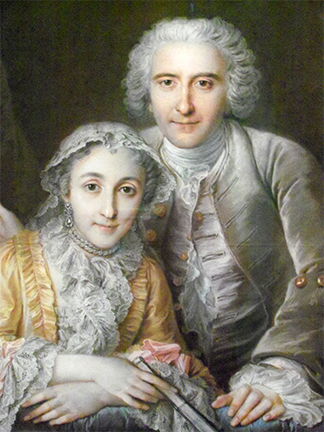.jpg) |
| The Comtesse de Provence is almost as white as her gown in this portrait |
Make-up was usually divided into two categories: the blancs and the rouges or the whites and the reds. Various recipes existed to top off the ideal complexion. Some of them were quite harmless and would consist of vinegar, egg whites or bismuth and as long as you could stand the smell of vinegar all day long you were fine. Others were not so harmless. Ceruse had been around for centuries but the ingredients were pretty much the same the main ingredient being: lead - or to be more precise the white chalk of lead. Then there was "pearl powder" which was made from actual pearls and gave the skin a very shiny look.
There were cheaper alternatives to the rather expensive white lead which was aluminium sulphate or simply "alum" while bismuth was the knock-off pearl powder. It was also common to enhance the blue colour of the veins to make the skin seem even paler!
The white make-up would be applied in thick layers using a brush to wipe out all signs of wrinkles or other ageing signs. Women would also whiten their shoulders as well as their bosom. While in France the white make-up was a sign of the courtier, in England it took a little longer for the aristocracy to join in since it was considered the look of a courtesan or an actress. Eventually, though, the English followed suit.
 |
| Both husband and wife seems to have taken up the white trend |

Is it true that the amount of powder that a courtier could apply to their face depended on their rank? Would higher ranked courtiers use alot of powder on their faces while lower ranked ones would use less powder on their faces?
ReplyDelete